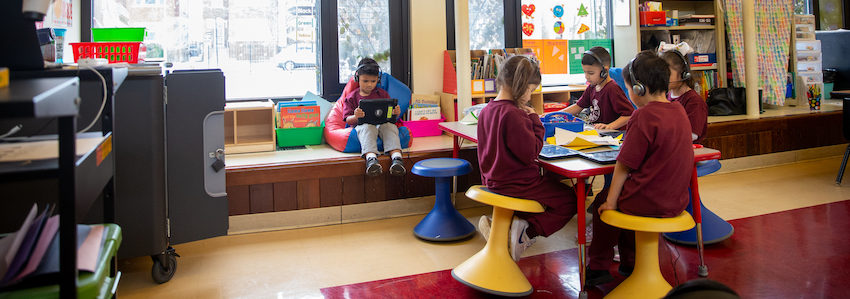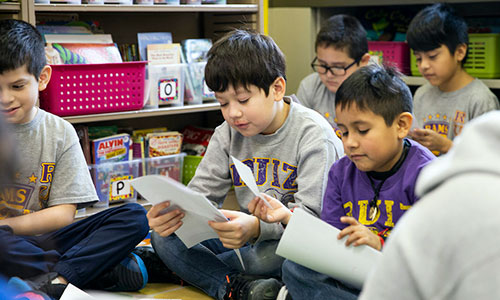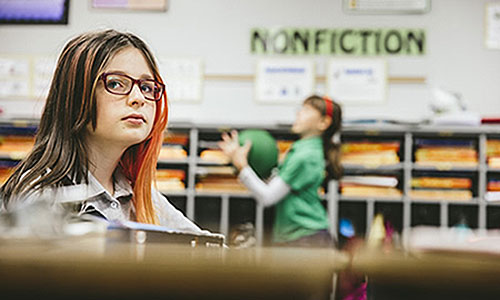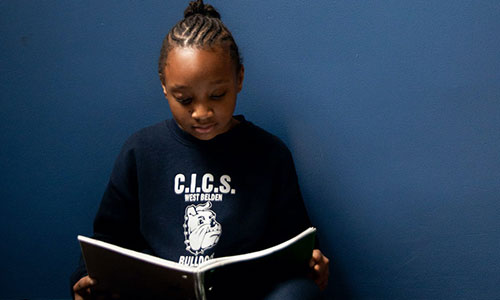
How much do we want all our students to be successful in reading? I’ll borrow a phrase from my son when he was little and say, “Infinity much.” We can all get behind that statement. So how do we design supports into our teaching to facilitate that student success?
One useful framework is the notion of teaching responsively. This is about responding to students and their needs, both planfully and in the moment.
The three principles of responsive teaching
A responsive teaching framework points to three fundamental attributes we should target in designing supports: accessibility, fairness, and inclusivity. If we take a moment with each and get our heads around a handy metaphor, then we can apply those to the particular case of responsive reading instruction.
- Make learning accessible. Designing for accessibility means thinking about shelves. First is scaffolding: If the learning is about content that’s on a high shelf, then we need to give access, like stepping stools. Second is modification: In some cases, we need to move from “off the shelf” thinking to “made to order.” We want kids spending time learning the content we care about, not expending most of their energy just trying to access it.
- Ensure fairness. We all know that sometimes fair is not equal. If a child needs prescription glasses, that doesn’t mean we should give all kids glasses just to be equal. But sometimes the only way to fairness is to build universally. Not every child needs a curb cut to get their wheelchair onto the sidewalk, but we’re only building each intersection once, so let’s build it fairly. (Bonus: Curb cuts are good for strollers and skateboards, too!)
- Build inclusivity. A classroom should be a unified community even while each student is uniquely different. Our classroom is one garden, and each student is a particular plant. We want a plan that helps all students belong and grow together in our garden, with each different plant getting and giving nutrients to the soil.
Shelves and stepping stools in reading instruction
Consider that the shelf is sometimes a high reach for students. Should we just lower it? In reading instruction, sometimes the grade-level texts that we discuss for comprehension can feel like they are up really high. But it’s critical to keep that height. All students deserve access to rich, grade-level text so they can develop their comprehension and knowledge. If you’re limiting kids to text at their “reading level,” consider how this affects equity in reading instruction.
So let’s design those stepping stools: scaffolding. Before we discuss structure and meaning in a text, we can preview vocabulary and build engagement. How does this connect to our lives and our current knowledge? To support each student’s decoding of the text, we can do repeated readings of passages, moving from high support to less. Model an oral reading yourself, then read chorally with the whole class, then do a partnered read. When all students are supported in building fluency on a text, they can free up effort and energy for thinking about meaning, text structure, and unpacking the author’s craft. When a grade-level text is a pretty high reach, if read independently, it is our job to build the right stepping stools so that everyone can gain access to the rich learning opportunities it presents.
Made-to-order modifications
Sometimes we need to shift from off-the-shelf to made-to-order. This is where modifications come in. Some students with disabilities, for example, will have more significant modifications called for in their IEP.
If I expect my high school students to read Romeo and Juliet, that’s a high shelf. But suppose the discussion today will center on a scene in the middle of the play, in which our happy hero kills—oops—and gets banished. To approach that scene with understanding of the 11 that come before it, one or more students might need an alternative to the text as written. A made-to-order solution might make use of a graphic novel version or a highly decodable summary.
Not all students will be offered this modification. Fair is not equal: we don’t give all students eyeglasses because one student needs them to see well.
Eyeglasses or curb cuts?
But when is access and equity more like eyeglasses and when is it more like curb cuts? Ideally, this is not about hard and fast boundaries but, instead, about cyclical, responsive thinking. Sometimes thinking about individual accommodations and modifications can improve our design of broader scaffolding.
Suppose I decide to send the qualifying student a video of the scene to watch twice before the day of the close reading in class. She’s the one who needs this, as protected in her IEP, so it’s certainly fair that she has a unique support. But here’s another thought: what if my target for this lesson isn’t about decoding the words but, instead, about how Shakespeare uses humor to deepen tragedy? Then, heck, why isn’t that video preview a good idea for the whole class?
Sometimes when we build solutions we thought were eyeglasses, they turn out to be good curb cuts instead. That’s building our capacity to do universal design for learning (UDL).
A garden of readers
Designing for student reading success needs to focus not only on access and equity but also on building inclusivity. Our choice of texts plays an important role.
If every text we use in high school is written by an old, dead, English-speaking white guy, then we signal to many students that their lived experiences are far outside what we consider worthy of study. Instead, we want students to read material that is both foreign to and familiar to their own lives, and that means seeking out diverse authorship.
Rudine Sims Bishop uses the analogy of windows and mirrors: when our readers look into a book, can they see themselves? Can they see something outside their lives? Both can be true at once. In The Watsons Go to Birmingham—1963, the mix of torment and compassion in sibling relationships is a mirror for me. But the Black family’s careful navigation of different levels of racism is a window.
Remember: Every student is a unique plant, and we can offer nutrients that feed all of them, sometimes in different ways. The plants then return nutrients to the soil themselves, if we let them. For this, we need to build a classroom where student voices are on, both orally and in writing, and where they are encouraged to speak as themselves and from their own experiences.
Imagine a kindergarten teacher, the book Abuela open to the kids on the carpet. The teacher is pointing to the page and asking “What sound does this letter make?” When she calls on Raul, his answer might be, “My abuela died.” Grief is clearly bigger than letter sounds; responsiveness matters more than the plan for this minute. When we can have conversations about real feelings and events, students learn that they matter here.
High quality teacher–student interactions and student–student interactions are absolutely key to a good garden: they develop language, belonging, deeper thinking, and engagement.
Humans, teaching responsively
We all want student success in reading—infinity much. Translating that want into action means designing instruction in ways that make learning accessible, ensure fairness, and build inclusivity. We can all get better at designing ahead with this kind of universality of support for success. And even when we are really good at it, it will always be the case—for infinity time—that we will discover during instruction how we can improve further still.
That’s a lot. Kind of like life. So, then, all this individual and universal support we’ve been talking about? Let’s build that for ourselves and for each other, too. Let’s remember to give ourselves the kind of patience, flexibility, and compassion we offer our kids when we teach responsively.







